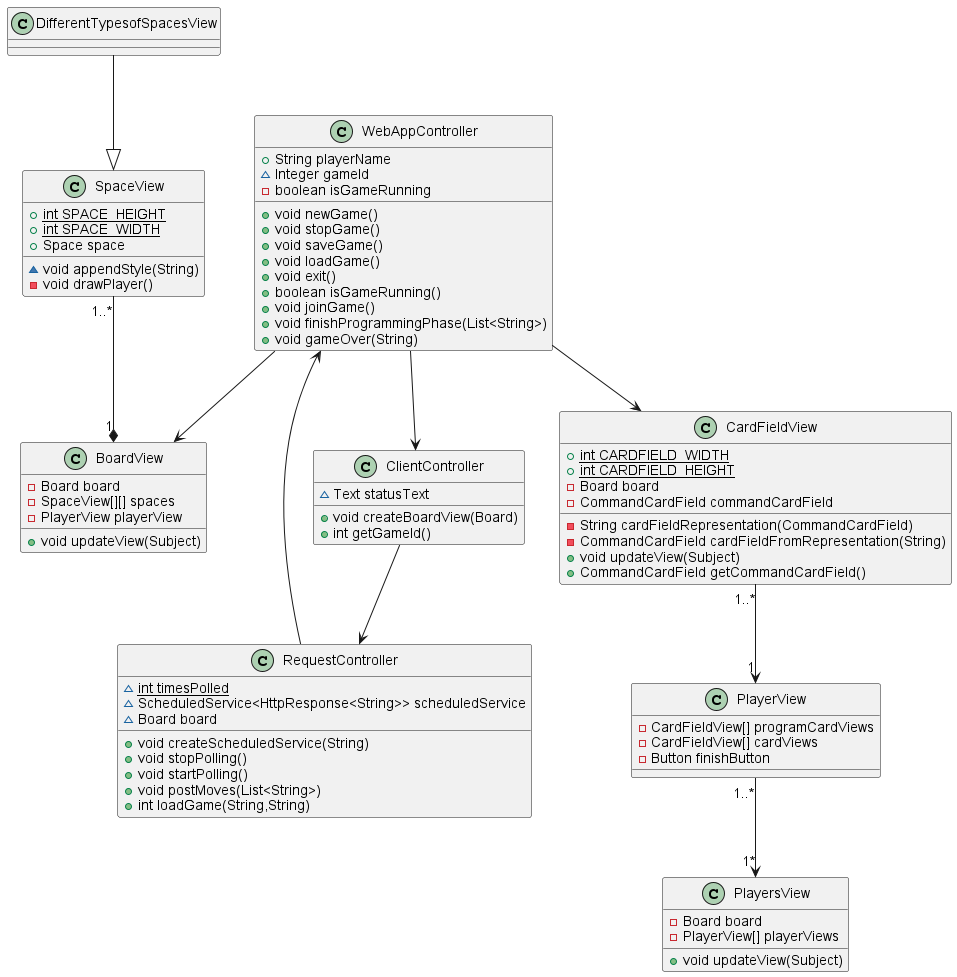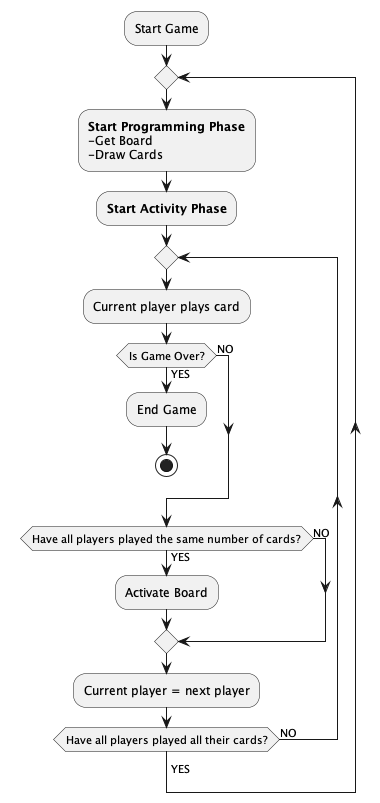- Java
- SpringBoot
- JavaFX
- REST
RoboRally: Digital Board Game Adaptation
This project involved developing a digital version of the classic RoboRally board game, where players control robots navigating hazardous game boards while competing to reach checkpoints. The game supports 2-6 players over the internet and was built using RESTful APIs for client-server communication, enabling smooth multiplayer gameplay.
Problem Overview
The project aimed to:
- Digitally adapt RoboRally for online multiplayer.
- Implement game mechanics like robot movement, checkpoints, and interactive board elements such as conveyor belts and gears.
- Create a system that allows for simultaneous move submissions by multiple players, with all game logic handled server-side.
Game Architecture
The game uses a client-server architecture where the server processes all game logic, and the clients handle the user interface and input submission. Key components include:
- MVC Pattern: Used to separate game logic (Model), user interface (View), and input handling (Controller).
- RESTful API: Designed to handle game state updates, move submissions, and player interactions, ensuring smooth and synchronized gameplay.
- JSON Serialization: Used for saving and loading game states, ensuring players can resume their games.

Features and Mechanics
Key game mechanics implemented in the project:
- Robot Movement: Players can program and execute robot movements in sequential turns, aiming to reach checkpoints.
- Field Actions: The game board includes elements like conveyor belts and gears, which automatically move or rotate robots.
- Walls and Checkpoints: Obstacles and goals (checkpoints) are crucial to the game, with walls preventing certain movements and checkpoints determining the game’s win condition.

Explainability
The project was designed with modularity in mind, making it easy to extend and add new features in the future. Detailed class and sequence diagrams ensured a clear understanding of how the client and server components interact during the game phases.

Conclusion
The RoboRally project successfully transformed the board game into a digital, multiplayer experience. Using the MVC design pattern and RESTful APIs for client-server communication, the game runs smoothly and is easy to maintain and expand. This project provided valuable insights into game development, client-server architectures, and multiplayer game synchronization.